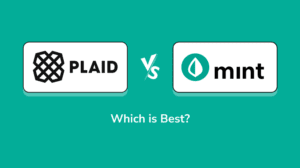The financial sector is continually evolving, driven by advances in technology and the growing demand for efficient, secure, and user-friendly systems.
One critical component in this space is the loan management system (LMS). Whether you’re a financial institution, a startup, or a non-profit, understanding the costs associated with developing a robust LMS is crucial.
In this article, we’ll explore the various factors influencing these costs, from choosing the right technology stack to hiring skilled developers.
Key Components of a Loan Management System
A loan management system is a comprehensive tool designed to automate and streamline the entire loan lifecycle, including:
- Application Processing: Digital forms, automated credit checks, and initial approval workflows.
- Loan Origination: Detailed underwriting processes, risk assessment, and loan structuring.
- Servicing: Payment processing, interest calculations, and customer account management.
- Collection: Automated reminders, delinquency management, and recovery processes.
Connect with us for Fintech Development Needs
Trusted by companies like Plaid, Yodlee, Codat.
Factors Influencing Development Costs
Scope and Complexity
The more features you want, the higher the cost. A basic LMS might include loan application and processing functionalities, whereas an advanced system would encompass detailed reporting, analytics, and integration with other finance software systems.
Technology Stack
Choosing the right technology is critical. Modern LMS development often leverages frameworks like Ruby on Rails due to its robustness and efficiency.
When you hire Ruby on Rails developers, you invest in a technology known for rapid development cycles and scalability, which can influence overall costs positively.
Customization Needs
Off-the-shelf solutions are cheaper upfront but might not meet all specific needs. Custom fintech software development services provide tailored solutions but come at a premium due to the bespoke nature of the development.
Integration Requirements
An LMS often needs to integrate with other systems such as CRMs, accounting software, and third-party credit checking services. These integrations can add to the development time and cost.
Regulatory Compliance
Ensuring that your LMS complies with local and international regulations (like GDPR, AML, etc.) requires additional development effort and expertise, impacting the cost.
User Experience Design
A user-friendly interface is crucial for customer satisfaction and operational efficiency. Investing in intuitive design and user experience can increase initial costs but offers long-term benefits.
Connect with us for Fintech Development Needs
Trusted by companies like Plaid, Yodlee, Codat.
Development Stages and Associated Costs
Planning and Analysis
This phase involves detailed requirement gathering, feasibility studies, and initial project planning. Costs in this phase are relatively lower but crucial for setting the foundation.
Design and Prototyping
Creating wireframes, mockups, and prototypes to visualize the system. Costs vary based on the complexity and number of iterations required.
Development and Testing
The most substantial phase, where the actual coding, integration, and testing occur. Hiring skilled developers, especially if you’re looking to hire Ruby on Rails developers, can be cost-intensive but necessary for quality output.
Deployment and Maintenance
Launching the LMS and ensuring it operates smoothly. Ongoing maintenance, including updates and bug fixes, represents a continuous cost.
Cost Estimates
- Basic LMS: $20,000 – $50,000
- Medium Complexity LMS: $50,000 – $150,000
- Advanced LMS: $150,000 – $500,000+
These are rough estimates, and actual costs can vary significantly based on specific requirements and regional cost variations.
Additional Considerations
- Non-Profit Organizations: For non-profits, considering non profit donation management software integration within the LMS can streamline operations and improve donor engagement.
- Vendor Selection: Whether choosing a development firm or freelancers, ensure they have a strong portfolio in fintech solutions.
Conclusion
Developing a loan management system is a substantial investment that requires careful planning and consideration of various factors. By understanding these elements, organizations can better prepare financially and strategically for implementing a robust LMS.
Investing in the right finance software systems and leveraging custom fintech software development services ensures a scalable and efficient solution tailored to specific needs.
Whether you’re looking to hire Ruby on Rails developers or integrate with existing systems, thoughtful planning can lead to a successful and cost-effective LMS development project.
Happy Loan Management System Development!!
Connect with us for Fintech Development Needs
Trusted by companies like Plaid, Yodlee, Codat.





